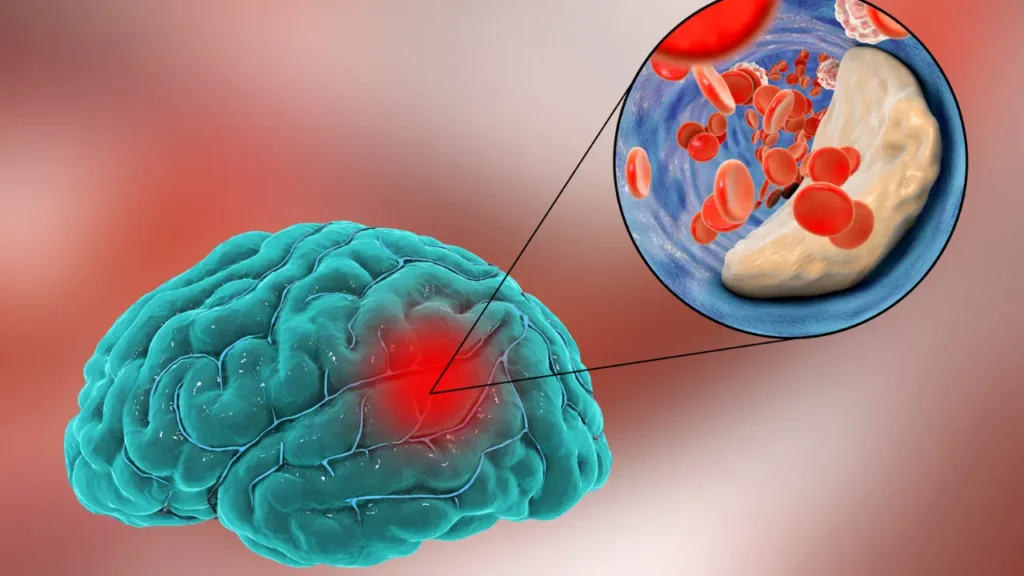The Wild Cherry is a native of North America. The Wild Cherry (Prunus serotina) is commonly referred to as the black cherry, and it is a deciduous tree. It is a member of the Rosaceae family and is well-known for both its lovely blooms and its delectable, black cherries. The therapeutic benefits of the Wild Cherry tree’s different parts, including its bark, leaves, and fruits, have been employed in traditional medicine for ages. In addition to explaining its physiological mechanisms of action, this article gives a full analysis of the chemistry, health advantages, ideal dosage, negative effects, potential drug interactions, and responsible applications of Wild Cherry as a nutritional supplement.
You May Also Like:
Levium Premium Liquid Fast-Acting Natural Stress Relief Supplement: In-Depth Review
BAIKAL SKULLCAP: Benefits, Dosage, Side Effects, Drug Interactions, And Other Important Information
WILD CHERRY: Benefits, Dosage, Side Effects, Drug Interactions, And Other Important Information is an original (NootropicsPlanet) article.
Nature of Wild Cherry
The Wild Cherry tree (Prunus serotina) is renowned for its lovely blooms and tasty fruits. The tree has clusters of tiny, fragrant, white flowers that bloom in the spring. The tree also has dark green, ovate leaves that go up to 80 feet tall. The petite, black, and sweet fruits usually ripen in the late summer. The bark, leaves, and fruits of the Wild Cherry tree have all historically been utilized in herbal medicine for their healing powers.
Health Benefits of Wild Cherry
1. Antioxidants and Anti-inflammatory Properties: The phenolic chemicals in Wild Cherry have strong antioxidant and anti-inflammatory capabilities. The phenolic chemicals in Wild Cherry, including hydroxycinnamic acids, flavonoids, and anthocyanins can shield cells from oxidative damage. This is because these chemicals lessen inflammation because they scavenge reactive oxygen species (ROS) and suppress pro-inflammatory enzymes.
2. Respiratory Health: Wild Cherry bark has traditionally been used to treat coughs and respiratory disorders, due to the presence of the cyanogenic glycoside prunasin. Prunasin is transformed by the body into hydrocyanic acid (HCN), which calms the respiratory system and lessens coughing.
3. Cardiovascular Health: The antioxidant and anti-inflammatory characteristics of Wild Cherry’s phenolic compounds may help to promote cardiovascular health. This is because these compounds help health by lowering oxidative stress and inflammation in blood vessels. Particularly, the chemical group of anthocyanins have been scientifically linked to a lower incidence of cardiovascular illnesses.
4. Antimicrobial Activity: Due to the presence of phenolic compounds, Wild Cherry has antimicrobial activity against a variety of bacteria and fungi. This characteristic might aid in infection prevention and general health promotion.

Chemistry of Wild Cherry
Wild Cherry’s bioactive components are mainly made up of phenolic substances such as hydroxycinnamic acids, flavonoids, and anthocyanins. The antioxidant activities of hydroxycinnamic acids, such as p-coumaric, caffeic, and ferulic acids, are well documented, so their presence speaks directly to the positive potential of Wild Cherry. In addition, flavonoids with antioxidant, anti-inflammatory, and immunomodulatory activities include quercetin and kaempferol glycosides, which are also present in Wild Cherry.
Anthocyanins, which give Wild Cherry fruits their black color, have strong anti-inflammatory and antioxidant properties. The three main anthocyanins present in Wild Cherry are cyanidin-3-O-rutinoside, cyanidin-3-O-glucoside, and peonidin-3-O-rutinoside. Additionally, prunasin, a special cyanogenic glycoside found in Wild Cherry bark, has long been valued for its calming and antitussive qualities, as aforementioned.
Physiological Mechanisms of Wild Cherry’s Action on the Body and Brain
Wild Cherry’s health advantages are linked to its bioactive ingredients. Some of these bioactive ingredients are primarily phenolic substances such as hydroxycinnamic acids, flavonoids, and anthocyanins. These chemicals work by scavenging reactive oxygen species (ROS), blocking pro-inflammatory enzymes, and altering immune cell function, among other actions.
Wild Cherry has antioxidant capabilities because of phenolic compounds. These compounds help protect cells from oxidative damage, which has been linked to a variety of chronic ailments including cardiovascular disease, cancer, and neurological disorders. These chemicals may also contribute to enhanced overall health and disease risk by lowering oxidative stress.
Wild Cherry’s phenolic compounds have anti-inflammatory characteristics due to their capacity to inhibit pro-inflammatory enzymes like COX-2 and iNOS. They can additionally control the generation of pro-inflammatory cytokines. This reduces inflammation, which can benefit a variety of health concerns, including cardiovascular disease and chronic pain.


Optimal Dosage of Wild Cherry
Individual needs, health goals, and the precise formulation employed all influence the recommended dosage of Wild Cherry as a dietary supplement. There is currently no universally suggested dosage; however, 1-2 grams of dried Wild Cherry bark or 1-2 mL of a liquid extract, taken up to three times day, is a usual starting point for adults. Before beginning any new supplement regimen, it is critical for you to contact a healthcare practitioner, especially if you have pre-existing medical conditions or are taking other medications.
Side Effects of Wild Cherry
When used properly and in adequate dosages, Wild Cherry is generally regarded as safe. However, some people may develop adverse effects, especially if they consume large amounts. Wild Cherry may cause the following adverse effects:
1. Cyanide Toxicity: The cyanogenic glycoside prunasin found in Wild Cherry bark can be converted into hydrocyanic acid (HCN), which can be harmful in large concentrations. Dizziness, headache, confusion, fast breathing, vomiting, and convulsions are among symptoms of cyanide toxicity. To reduce the danger of cyanide toxicity, it is safe for you to use the prescribed dosages and consult a healthcare expert before usage.
2. Gastrointestinal Distress: Wild Cherry may induce gastrointestinal discomfort in some people, such as nausea, vomiting, or diarrhea. These side effects are usually minor and can be avoided by lowering the dosage or stopping use altogether.
3. Allergic Reactions: People who are allergic to Rosaceae plants should avoid using Wild Cherry since it may cause an allergic reaction. An allergic reaction can cause a rash, itching, swelling, and difficulty breathing.


Potential Substance Interactions with Wild Cherry
Wild Cherry, like any other dietary supplement, has the potential to interact with other drugs and substances. Some potential interactions to be aware of are as follows:
1. Sedatives and Central Nervous System Depressants: Because prunasin has sedative effects on the respiratory system, Wild Cherry may have an additive impact when combined with other sedatives or central nervous system depressants such benzodiazepines or opioids. It is important for you to consult a healthcare practitioner before consuming Wild Cherry in conjunction with these drugs.
2. Anticoagulants and Antiplatelet Drugs: When combined with anticoagulant and antiplatelet drugs, the anti-inflammatory qualities of Wild Cherry may raise the risk of bleeding. Warfarin, heparin, aspirin, and clopidogrel are examples of such medications. It is crucial for you to consult a healthcare practitioner before consuming Wild Cherry in conjunction with these drugs.
Best Responsible Uses of Wild Cherry
The following rules should be followed to guarantee the safe and responsible use of Wild Cherry as a dietary supplement:
1. Consult a healthcare professional: Consult a healthcare professional before beginning any new supplement, especially if you have pre-existing medical conditions, are taking drugs, or are pregnant or breastfeeding.
2. Begin with a low dose: Start with a modest dose of Wild Cherry (e.g., 1-2 grams of dry bark or 1-2 mL of a liquid extract) and gradually increase the dose as needed while monitoring for any unwanted effects.
3. Supplement Quality: Purchase high-quality Wild Cherry supplements from reliable producers who adhere to strong quality control standards and provide detailed information about the product’s contents and dosages.
4. Follow the dose recommendations: Do not exceed the prescribed dosage of Wild Cherry supplements since doing so may cause gastrointestinal upset or other negative effects.
5. Exercise caution: Be cautious of potential side effects and combinations with other medications and see your healthcare practitioner if you notice any odd symptoms or have concerns about potential interactions.
6. Use in conjunction with a healthy lifestyle: While Wild Cherry may provide a variety of health benefits, it is important that you remember that it should be combined with a good diet, regular exercise, and proper sleep to maximize its potential benefits and improve overall well-being.
WILD CHERRY:
Conclusion
Wild Cherry is a fruit, but there are other parts of the tree that can be consumed for health benefits. It is a tree with fruits, flowers, and bark that can be consumed as a supplement. Consumption of Wild Cherry can assist with areas such as cardiovascular health, respiratory health, and more. Use with caution and awareness as there are a few, serious, potential negative effects when people consume it unsafely. Consider integrating consumption of Wild Cherry into whatever series of healthy lifestyle choices you are already making or preparing to make.


References:
- “Physicochemical, Antioxidant and Sensory Characteristics of Black Cherry (Prunus Serotina Subsp. Capuli) Fermented Juice.” Retrieved from: https://www.tandfonline.com/doi/full/10.1080/15538362.2019.1709113
- “Prunus serotina.” Retrieved from: https://plants.ces.ncsu.edu/plants/prunus-serotina/
- “Antioxidant and antimicrobial activity of capulin (Prunus serotina subsp capuli) extracts.” Retrieved from: https://www.scielo.org.mx/scielo.php?script=sci_arttext&pid=S1665-27382011000100004
- “Anthocyanins and human health: An in vitro investigative approach.” Retrieved from: https://pubmed.ncbi.nlm.nih.gov/15577194/
Important Note: The information contained in this article is for general informational purposes only, and should not be construed as health or medical advice, nor is it intended to diagnose, prevent, treat, or cure any disease or health condition. Before embarking on any diet, fitness regimen, or program of nutritional supplementation, it is advisable to consult your healthcare professional in order to determine its safety and probable efficacy in terms of your individual state of health.
Regarding Nutritional Supplements Or Other Non-Prescription Health Products: If any nutritional supplements or other non-prescription health products are mentioned in the foregoing article, any claims or statements made about them have not been evaluated by the U.S. Food and Drug Administration, and such nutritional supplements or other health products are not intended to diagnose, treat, cure, or prevent any disease.
